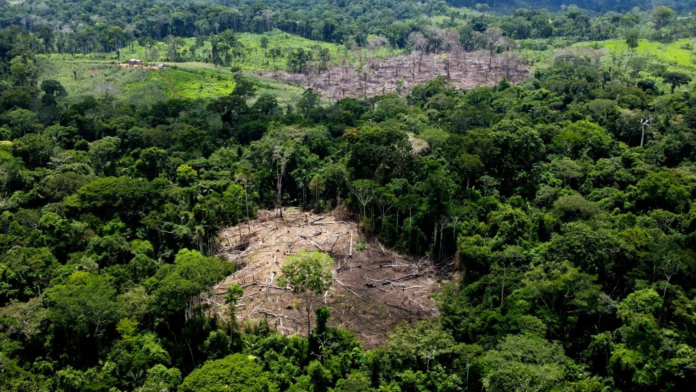As negotiators debate the final text of an agreement from COP28, the world cannot wait for action, as humanity has fallen woefully behind on emission reduction targets and important conservation efforts. We must seize the surrounding momentum to focus on the importance of conserving natural ecosystems, including forests, as well as sharply cutting carbon emissions, to help avoid climate disaster.
COP28’s agenda included a focus on the “conservation, restoration, and sustainable management of nature.” This topic isn’t just rearranging deck chairs on the Titanic — it’s integral to meeting the Paris Agreement targets and to halting biodiversity loss.
Healthy, well-managed forests, especially old-growth forests, remain one of the most important resources we have for counteracting climate change. Coupled with drastic and immediate reduction in greenhouse gas emissions, we must commit to preserving forests, which are an essential tool to capture planet-warming carbon and the home of the vast majority of terrestrial biodiversity.
For the science behind why forests are important for carbon capture, in a high-level nutshell: trees and other plants take carbon dioxide out of the atmosphere through photosynthesis, making them a crucial carbon sink. Home to hundreds of thousands of diverse plant species, forests keep the cycle going by releasing nutrients to ensure future healthy plant growth and also protect soil, itself a carbon sink, from erosion. Other natural ecosystems, like wetlands, mangroves, seagrasses, and prairies, also make significant contributions as carbon sinks.
But the effectiveness of forests as a tool for carbon capture has recently come under scrutiny. Some have argued that forests now emit more carbon than they capture because of forest fires, essentially canceling out their usefulness in climate change mitigation.
But make no mistake: forests remain an invaluable environmental asset, which a prominent new study has once again corroborated. The key is that forest conservation and planting new trees can’t replace cutting fossil fuels. They must happen in tandem.
If we allow the destruction of natural ecosystems like forests to continue at its current pace, we risk losing much more than carbon sinks — the habitats of thousands of plant and animal species across the globe are also at risk. With up to 45% of all known flowering plant species alone currently under possible threat of extinction, such loss cannot be reversed without global resolve.
The world’s plants and animals have their own inalienable rights to a healthy planet. And as we continue to learn firsthand, when biodiversity declines, people are at greater risk of food insecurity, water scarcity, and even zoonotic disease.
Too often, our forests face deliberate threats, with human activity damaging vital forests on purpose. Perhaps the most troubling instance of deforestation is the conversion of large parts of the Amazon, the world’s biggest rainforest, to cattle ranches. As wildfires, coupled with intentional destruction, continue to ravage our forests, we are destroying one of the strongest bulwarks we have against carbon dioxide emissions.
Biologists across the globe are working in earnest to prevent this. These efforts, such as The New York Botanical Garden’s research and sustainable forest management training programs in the Amazon, include identifying and characterizing trees to help us understand the standing stock of biodiversity and forest products, which is a crucial part of designing effective management strategies and preventing harmful practices. Initiatives like these conserve plant species and in turn forests’ capacity to offset the impacts of climate change.
Important forest conservation efforts are happening closer to home, too. Nature-rich urban spaces, or urban forests, are now understood to be essential to global conservation. Once written off as useless remnants of long-gone wildernesses, urban forests cool and retain carbon within cities, provide habitat for a surprising range of native species, form corridors for animal migration, and give city dwellers access to the well-established benefits of nature.
The restoration of urban forests, including the removal of invasive species and the re-establishment of native plant populations, is proving crucial for environmental and social health.
Globally, our best defenses against ecosystem loss include enforcing ambitious measures that monitor, protect and guide wise management of native forests and prioritizing large-scale restoration projects to promote natural biodiversity. We must also move beyond short-sighted practices that frame planting trees alone as a way to offset carbon dioxide emissions and instead look to comprehensive solutions.
COP28 led to many calls for decarbonization — and rightly so — but we shouldn’t lose sight of the importance of conservation. If we significantly curb greenhouse gas emissions while safeguarding nature, and we do it now, the planet will be a better home for all of us.
Bernstein is CEO and president of The New York Botanical Garden.




